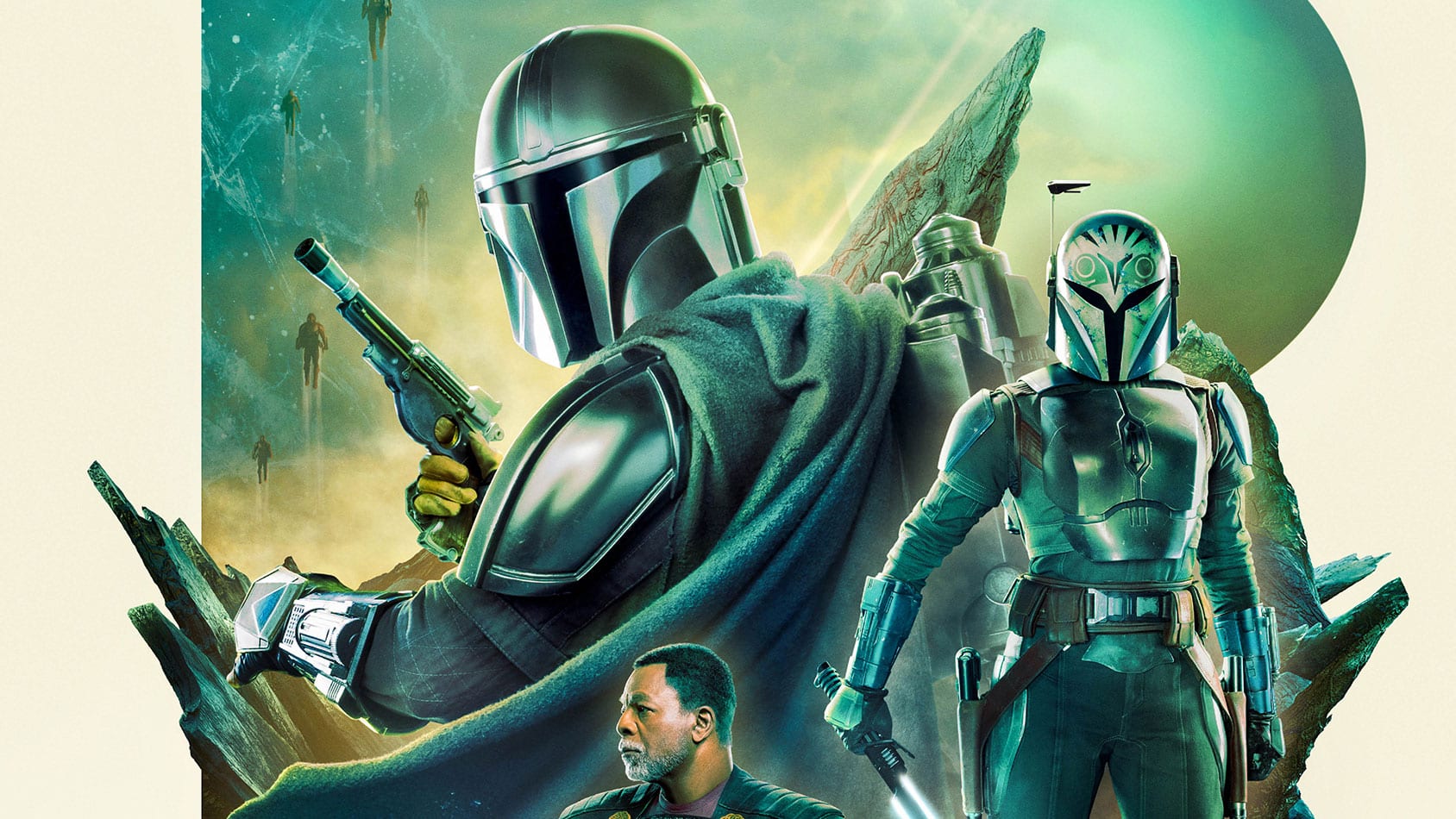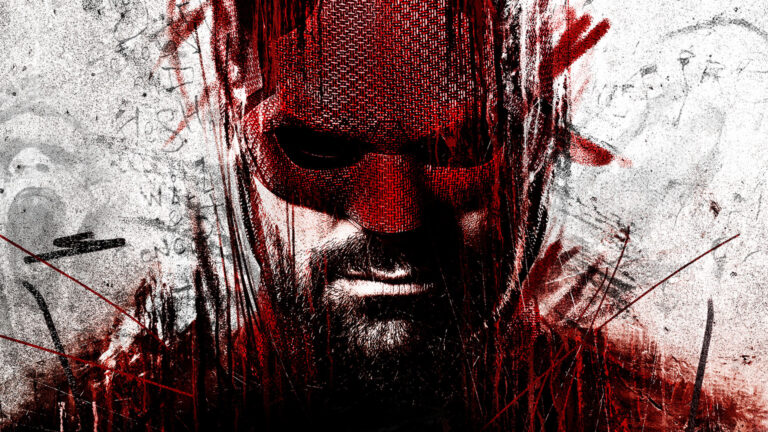Kim Richards: Filmmaking the Mandoverse
Kim Richards reflected on her journey as 1st AD, second unit director, and producer in the Mandoverse shows—explaining the challenges and complexities of holding these series together.

The global success of the Mandoverse has to be fully credited to the entire cast & crew of the shows, but there is one person that holds it all together: The first assistant director. Before stepping into the galaxy far, far away, Kim Richards began her decade-long collaboration with Jon Favreau on The Jungle Book and The Lion King as 1st AD. Favreau’s trust in Richards fluidly led her to collaborate on Star Wars’ first live-action TV series, The Mandalorian and subsequently The Book of Boba Fett and the upcoming Disney+ limited series, Ahsoka—wearing multiple hats as first AD, second unit director, and ultimately producer. Richards reflected on her Mandoverse journey, from addressing scheduling challenges with the Volume to praising the work of her talented and passionate crew.
“For me, the most special thing about being involved so early in the process is seeing Jon’s vision come to life.” With this quote, Kim Richards started to tap deeper into the excitement and energy that manifested during the production of the first season of The Mandalorian—a pivotal moment in the industry and Star Wars as the compelling characterization and storytelling of the show will forever change pop culture. “We were all excited to be doing Star Wars. It was just kind of like holding our breath because we were trying a lot of new technology, and we weren’t sure if it was gonna work or how successful it was gonna be. Nobody had really done what we were setting out to do, having the depth and the technology that we used on this show … It was a huge gamble but it totally paid off,” Richards said.

Ever since the first Star Wars in 1977, Lucasfilm has pushed the boundaries of filmmaking, combining traditional tools with experimental technology to tell a larger-than-reality story. The Mandalorian was no exception, with Jon Favreau’s team being among the first to utilize the Volume to leverage a virtually location-free set—generating new worlds at a relatively lower budget that, paired with physical props, created a sense of being in a physical location without the hassle of traveling. However, Richards explained that this new technology is not the ultimate answer for every shot—the limitations of the Volume would only allow for certain settings: “We were trying this technology for the first time. Greig Fraser, our Director of Photography at the time had worked with this technology a little bit in Rogue One but certainly not to the caliber that Jon was asking for. There was a lot of trial and error. For example, we had some night scenes that we put in the Volume, and after shooting them we realized we couldn’t really see the screens that well. So anything at night, we’re not going to put it in the Volume. Now, with that said, we did do night scenes by a campfire in Season One. That worked really well because there was a small light source and Mando is super reflective. Another thing that we learned very quickly is that daylight in the Volume doesn’t work well, the sun is just so bright in real life, and that’s such a hard thing to emulate. So anything daylight we need to do outside … we can’t do that in the Volume.” Richards added, “In the same token, anything sunset or dusk was gorgeous, and also with neon lights. Coruscant specifically in this last season of Mando, we shot in the Volume. I think it’s a testament to how well Jon has pushed this forward. [Chapter 19] was really the first time that our crew walked on set feeling like they were in Star Wars. You could never make that in real life; it would be millions and millions of dollars.”
One of the most crucial parts of being a first assistant director is keeping everything on schedule and on budget. Kim Richards confessed that The Mandalorian and the other Mandoverse shows have been the most difficult projects she has ever worked on: “[The Mandalorian] is a feature caliber show on a TV budget and schedule, which makes it really, really challenging. Normally, a feature film has 90 minutes of content and you have 40-50 days to shoot it. With us, we’re making somewhere around 800 minutes of television and have a very short window of time to do it. On average, each episode takes about 25 days for us to shoot, which is just insane.” Richards delved deeper in the complexities of the show’s schedule, explaining that you begin with “anchors”, or things that can’t move in the schedule, which in the case of the Mandoverse is the Volume. She said, “I would say like 80% of our schedule is shot in the Volume. It makes it very tricky to schedule because for example, Peli’s Hangar is quite a large build, it takes three or four days to put into the Volume. I have to find something in our schedule that’s three or four days that’s not in the Volume that we can shoot. So that needs to be something on stage or on our backlot. I kind of build the schedule from that.” Richards added, “The second tier of scheduling is actor availability. For example, Amy Sedaris is based in New York, so it’s hard for her to come to Los Angeles. We try to put all of her work together; that’s called block shooting. Jon has all these really fun, great cameos, but sometimes the schedule is very conflicted for these actors to come out to LA … It’s a very intricate dance. Then, you know, filming The Book of Boba Fett during the COVID pandemic made the schedule change every single day.”
Creating a galaxy that is so far away from ours seems so simple when seen through the eyes of the audience. However, oftentimes props don’t have the practicality that allows the actors to perform on set, and in that case last minute low tech adjustments make the shows function. Kim Richards revealed some tricks of the trade that made these shows work in unpractical situations, from Brendan Wayne’s suggestion to build a little footstep into the side of the N-1 so he could actually jump out of the ship safely to what really holds the Darksaber on Mando’s belt: a little S-hook that you would find at any department store. But probably the most fascinating behind-the-scenes revelation was Katee Sackhoff’s Bo-Katan helmet. “One of the hardest things that we do on our show (you’re gonna laugh when I say this) is taking Katee Sackhoff’s helmet off. Her wig was such a delicate thing that taking off the helmet was always the bane of all of our existence. We had three versions of the helmet: a regular one for Katee’s comfort, which we called the hollow helmet. Then we had the finished helmet with all the nuts and bolts inside, and one for frontal coverage so she could take it off and we could see that hair intact. A different helmet depending on what shot we would have. It’s the seemingly simple things that are actually the hardest ones,” she said.

From 1st AD to second unit director in The Book of Boba Fett and Season Three of The Mandalorian. Kim Richards shared her experience shooting the action scenes with the stunt team: “Our stunt team is incredible, they’re all incredible athletes. They always come well rehearsed and well choreographed. First of all, as a director for stunts, the biggest thing is safety. But second of all, knowing what the dance is. We know what we want to cover and how we want to cover it, making sure that people don’t get burnt out. A lot of people forget that, with stunts, you can’t fight for 12 hours. So, my biggest thing with the stunt sequences is making sure that we’re staying in it and that we’re moving quickly and getting ahead of things, and just really communicating about what our goal is and getting it done.” She also added that, “Dave [Filoni] and Jon are so logical, they always ask the question, ‘Could you really do this, could this really happen?’ We use that as our foundation for anything character development, story development, stunt sequences. It’s an incredible core to have because then you have instant credibility with everything that you’re doing.”
As second unit director in Season Three of The Mandalorian, Kim Richards had the chance to direct scenes with creatures and droids—admitting to be some of her favorite little moments in the entire show. She remembered having a lot of fun shooting the R5 moments in the season, and explaining the technicality of working with these intricate props. “The thing that made the R5 sequences challenging was that there were several different versions of the droid: the two-legged version, the three legged version, and then that scomp link that pops out and goes into the control panel. Sometimes you’re forced to have cuts because of the nuts and bolts of how things come together.”

On top of being the 1st AD and second unit director, Kim Richards was also credited as one of the producers of the Mandoverse shows, a role that only made sense because of her monumental contribution since the very beginning. “I really try to be an advocate for the crew, to help be the mediator for the actors when something’s not working or they’re not happy. People just find that they can come to me to help solve their problems, so it was a natural fit that I would get that title … some people call me ‘mama bear’; I just wanna look out for everybody,” she said.
Kim Richards ended the interview reflecting upon her experience so far, feeling thankful for the entire crew and getting excited about the release of Ahsoka in August: “It was the hardest thing we’d done, our crew was tired. We had just come off of The Book of Boba Fett. You know, we didn’t take a break. We went right into Mando and then as we’re finishing Mando, we were starting Ahsoka. I’m just really proud of our entire crew and everybody who was involved in it because it was a lot of work. Everybody stayed kind and gracious, hardworking, and grateful and so much of that stemmed from the environment that Dave and Jon created.”
The love and passion of Kim Richards and her Mandoverse crew is inspiring to say the least, and makes the fans appreciate these shows even more. If you are able to share your thoughts, questions, and love to these unsung heroes, then make sure to do so—they deserve the spotlight.





